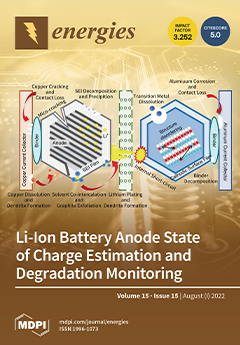In addition to the different technologies of silicon solar cells in crystalline form, TOPCon solar cells have an exceptionally great efficiency of 26%, accomplished by the manufacturing scale technique for industrialization, and have inordinate cell values of 732.3 mV open-circuit voltage (V
oc) and a fill factor (FF) of 84.3%. The thickness of tunnel oxide, which is less than 2 nm in the TOPCon cell, primarily affects the electrical properties and efficiency of the cell. In this review, various techniques of deposition were utilized for the layer of SiO
x tunnel oxide, such as thermal oxidation, ozone oxidation, chemical oxidation, and plasma-enhanced chemical vapor deposition (PECVD). To monitor the morphology of the surface, configuration of annealing, and rate of acceleration, a tunnel junction structure of oxide through a passivation quality of better V
oc on a wafer of n-type cell might be accomplished. The passivation condition of experiments exposed to rapid thermal processing (RTP) annealing at temperatures more than 900 °C dropped precipitously. A silicon solar cell with TOPCon technology has a front emitter with boron diffusion, a tunnel-SiO
x/n
+-poly-Si/ SiN
x:H configuration on the back surface, and electrodes on both sides with screen printing technology. The saturation current density (J
0) for such a configuration on a refined face remains at 1.4 fA/cm
2 and is 3.8 fA/cm
2 when textured surfaces of the cell are considered, instead of printing with silver contacts. Following the printing of contacts with Ag, the J
0 of the current configuration improves to 50.8 fA/cm
2 on textured surface of silicon, which is moderately lesser for the metal contact. Tunnel oxide layers were deposited using many methods such as chemical, ozone, thermal, and PECVD oxidation are often utilized to deposit the thin SiO
x layer in TOPCon solar cells. The benefits and downsides of each approach for developing a SiO
x thin layer depend on the experiment. Thin SiO
x layers may be produced using HNO
3:H
2SO
4 at 60 °C. Environmentally safe ozone oxidation may create thermally stable SiO
x layers. Thermal oxidation may build a tunnel oxide layer with low surface recombination velocity (10 cm/s). PECVD oxidation can develop SiO
x on several substrates at once, making it cost-effective.
Full article





